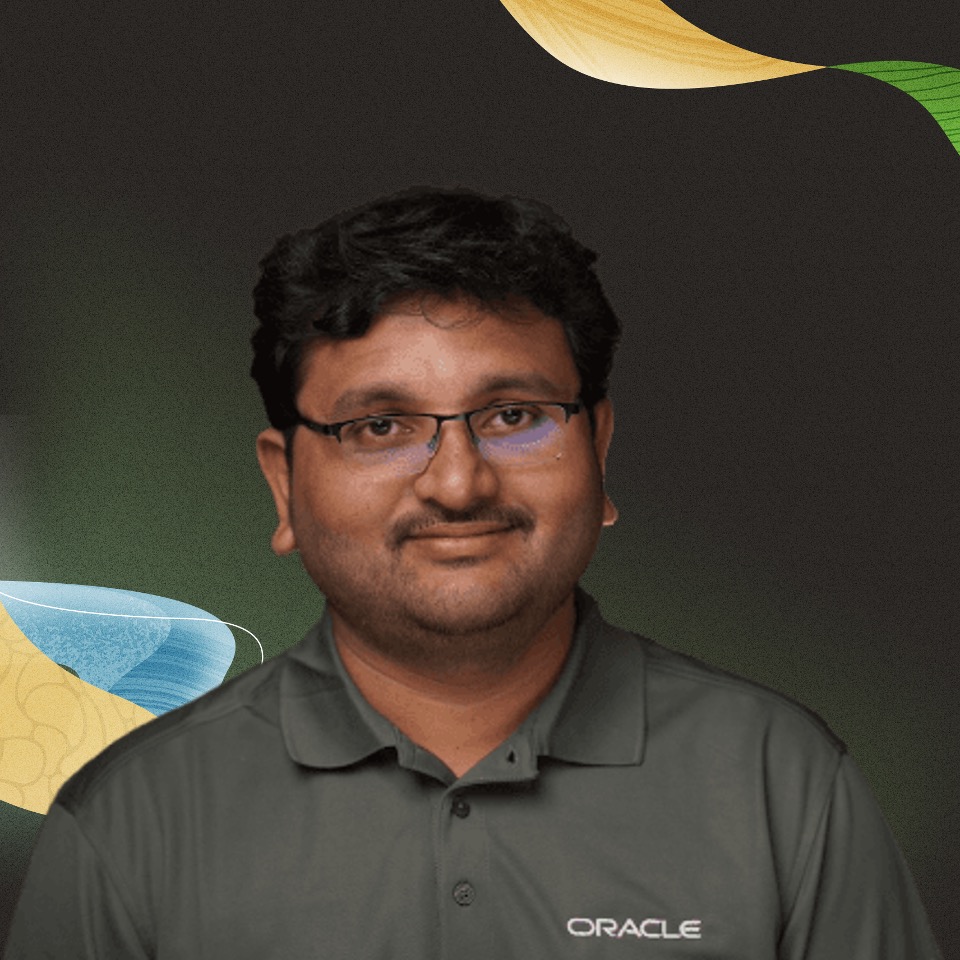OCI Full Stack Disaster Recovery (Full Stack DR) provides a fully automated and comprehensive disaster recovery orchestration solution for all the layers of a full-stack cloud application, including infrastructure, database, and application. Using Full Stack DR, you can recover your full stack applications across OCI regions or across availability domains within the same region.
Here is a quick recap of the currently available DR plans and members that can be part of the DR protection group in Full Stack DR service.
DR plan types:
- Switchover
- Failover
Members:
- Compute ( Virtual Machine and Dedicated Virtual Machine Host)
- Oracle Base Database Service
- Oracle Exadata Database Service on Dedicated Infrastructure
- Oracle Autonomous Database Serverless
- Volume Group
Based on the members in the DR protection groups, Full Stack DR will automatically generate built-in groups while creating the DR plans in the standby DR protection group region. You can further customize the DR plans with user-defined plan groups and steps depending on your requirements.
I’m pleased to share the exciting new features we recently rolled out with Full Stack DR service.
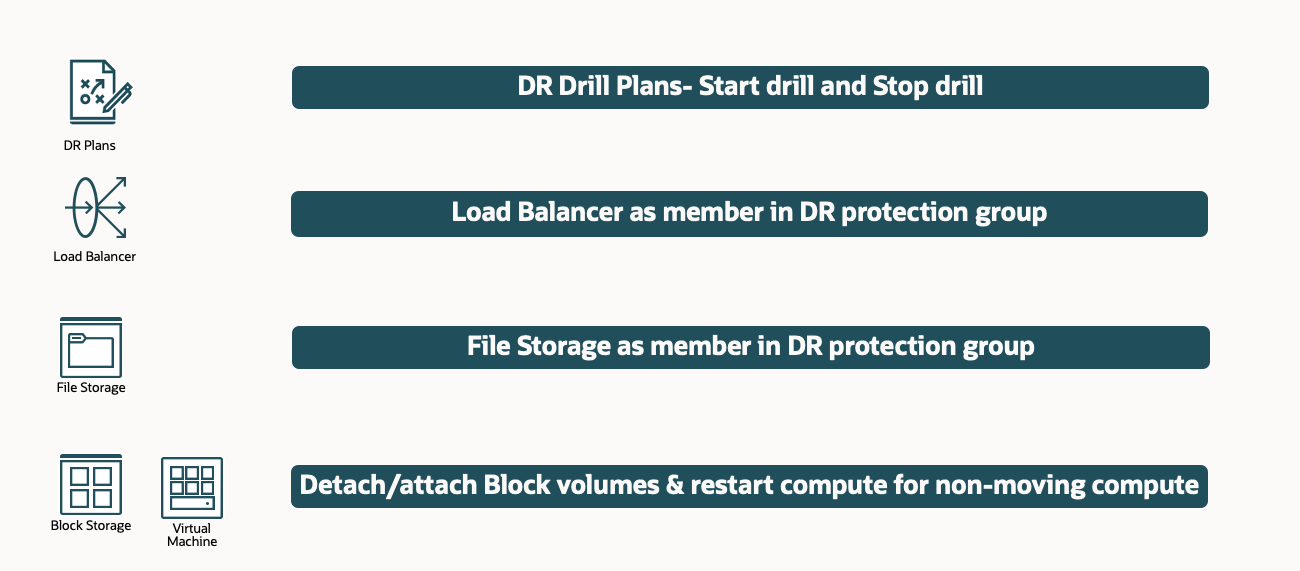
1. DR Drill Plans:
Performing DR drills is an essential DR service capability that allows customers to exercise and validate their business continuity configuration and plans without disrupting their production stack.
The DR Drill plan allows one to bring up a copy of the production stack in isolation in the standby region for testing and validation. You can create two types of DR drill plans.
- Start Drill – Creates a replica of the production stack in the standby region, identical to what’s used in a switchover or failover plan. This replica creation does not disrupt the production stack in any way.
- Stop Drill – Removes the replica of the production stack created in the standby region by the “Start DR Drill” plan.
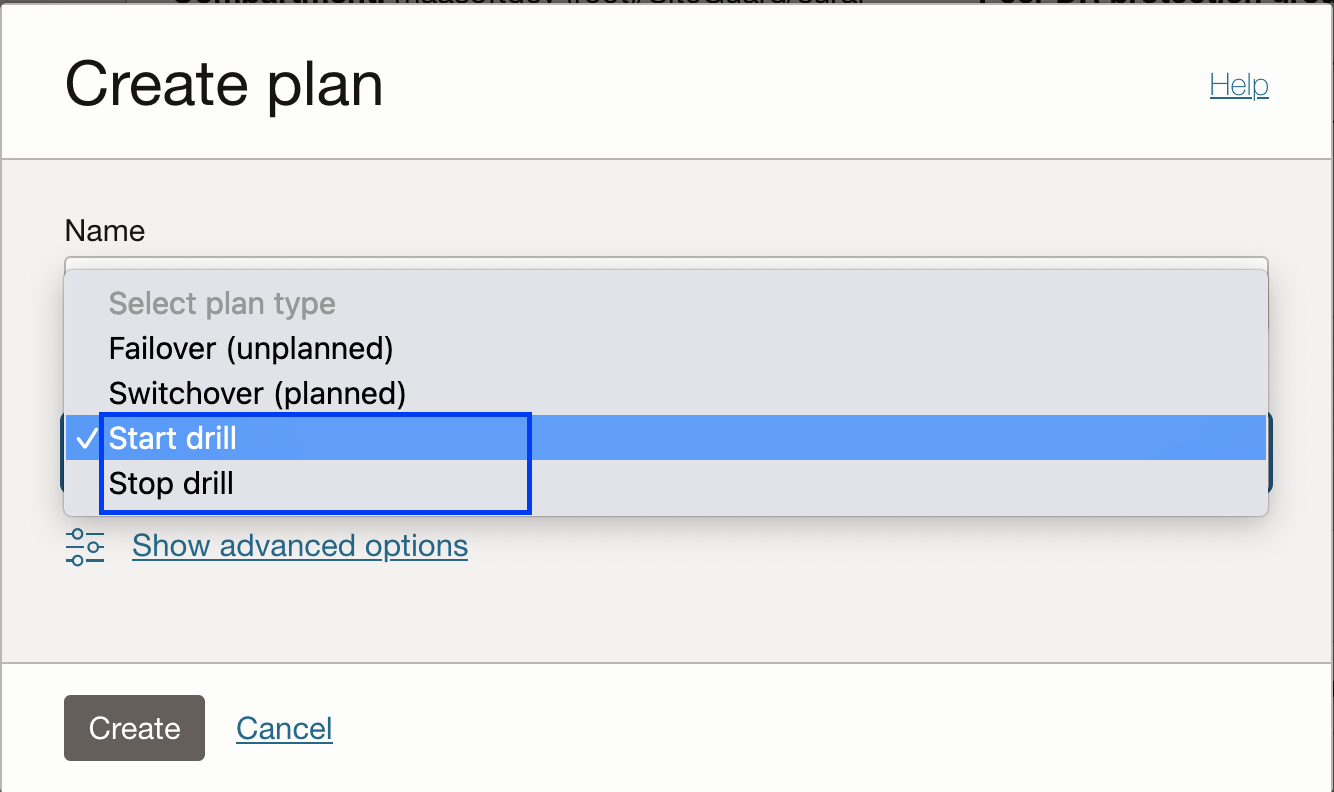
The creation of a DR Drill Plan is simple.Depending on the DR topology, add the members to the DR protection groups ( Primary and Standby) and create DR Drill plans from the Standby DR protection group. For addtional details, refer DR Drill plans.
2. OCI File Storage Service (FSS) member type:
OCI File Storage service provides a durable, scalable, secure, enterprise-grade network file system. You can connect to a File Storage service file system from any bare metal, virtual machine, or container instance in your Virtual Cloud Network (VCN).
You can add a File system as a member to the DR protection group.
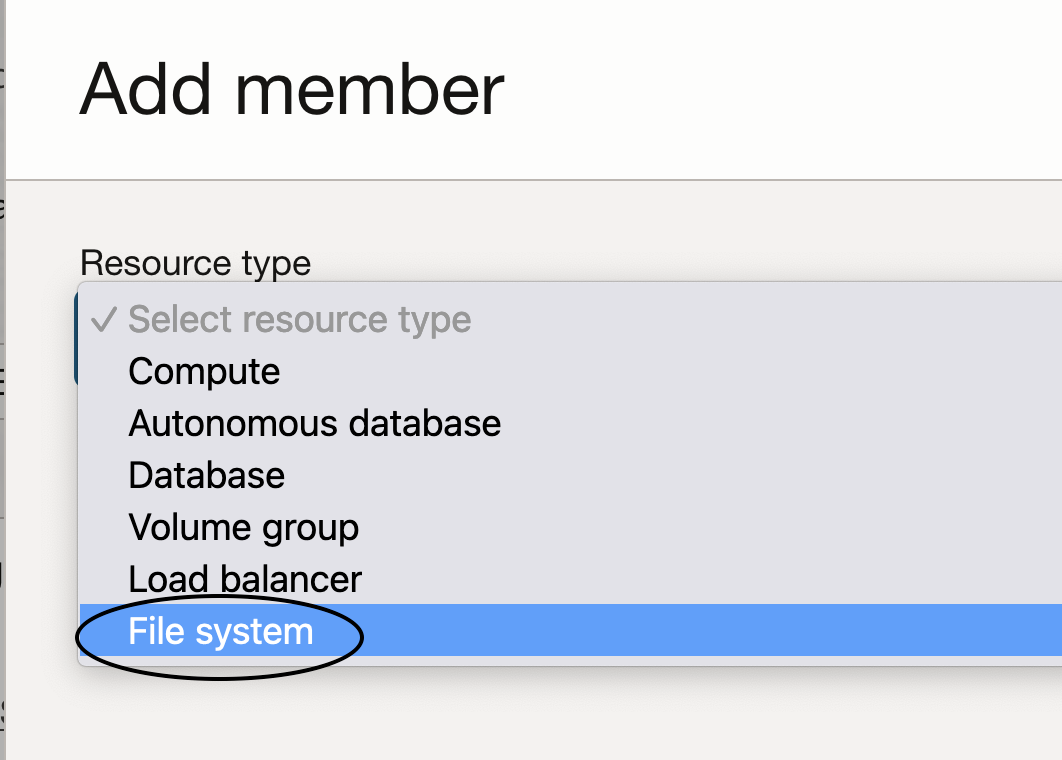
In order to use the OCI FSS Member Type, provision the file system, mount target, export paths, and set up cross-region replication. For more details refer OCI File Storage documentation. Depending on the DR topology, add the members to the DR protection groups ( Primary and Standby) and create DR plans from the Standby DR protection group.
Full Stack DR service provides built-in plan groups and steps for the File system based on the type of DR plans (switchover, failover, and DR drill ). Full Stack DR service will generate the below built-in plan groups which are relevant for the File system, and its dependent compute instances (if any)
- Unmount the file systems from the compute instances
- Switchover File systems
- Mount the file systems in the compute instances
- Reverse the File systems replication
3. OCI Load Balancer member type
OCI Load Balancer provides automated traffic distribution from one entry point to multiple servers reachable from your virtual cloud network (VCN).
You can add a load balancer as a member to the DR protection group.
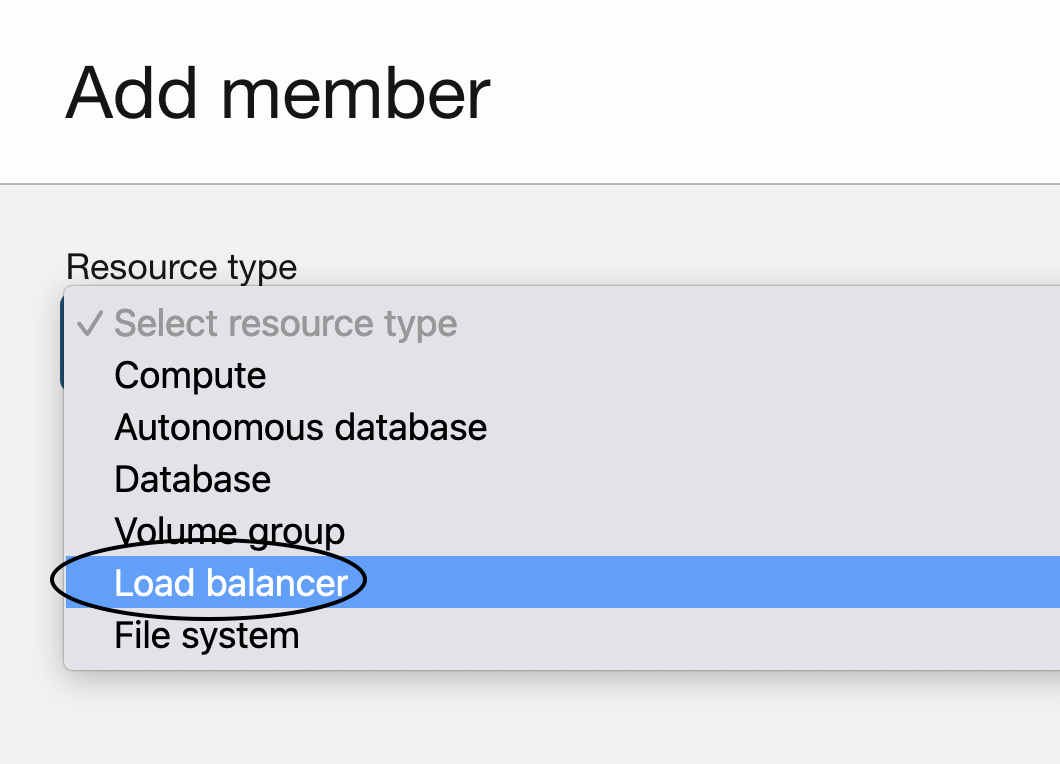
Full Stack DR will provide support for both load balancer and network load balancer. The load balancer can be public or private.
In order to take advantage of this feature, backend sets, listeners, and additional load balancer configurations must be created in both the primary and standby regions. For more details refer OCI Load Balancer documentation.Depending on the DR topology, add the members to the DR protection groups ( primary and standby) and create DR Drill Plans from the standby DR protection group.
Full Stack DR provides built-in plan groups and steps for the load balancer backend set changes based on the type of DR plans (switchover, failover, and DR drill). The built-in plan groups and steps below will be generated by the Full Stack DR service, which is relevant for the load balancer and its dependent compute instances (if any).
- Update source load balancer backend sets- remove or drain state (offline) backend servers
- Update target load balancer backend sets – add or drain state (online) backend servers
For addtional details, refer OCI Full Stack Disaster Recovery Support for OCI Load Balancer.
4. Detach/attach block volumes & stop/start a non-moving compute instances
For cold standby or pilot light topologies, Full Stack DR already has capabilities using a moving compute instance and volume groups as members to the primary DR protection group; by using this, Full Stack DR can launch the compute instances and automatically mount the replicated block volumes to those compute instances in the DR region.
For warm standby or active-passive topology, though customers use cross-region replicated block volumes in the DR region, attaching/detaching the block volumes must be handled by user-defined plan groups/scripts. With this new feature, while adding the non-moving instance, you can provide the details of block volume and other details that need to be detached/attached. You can also specify to start and stop of the compute instances during DR plan execution.
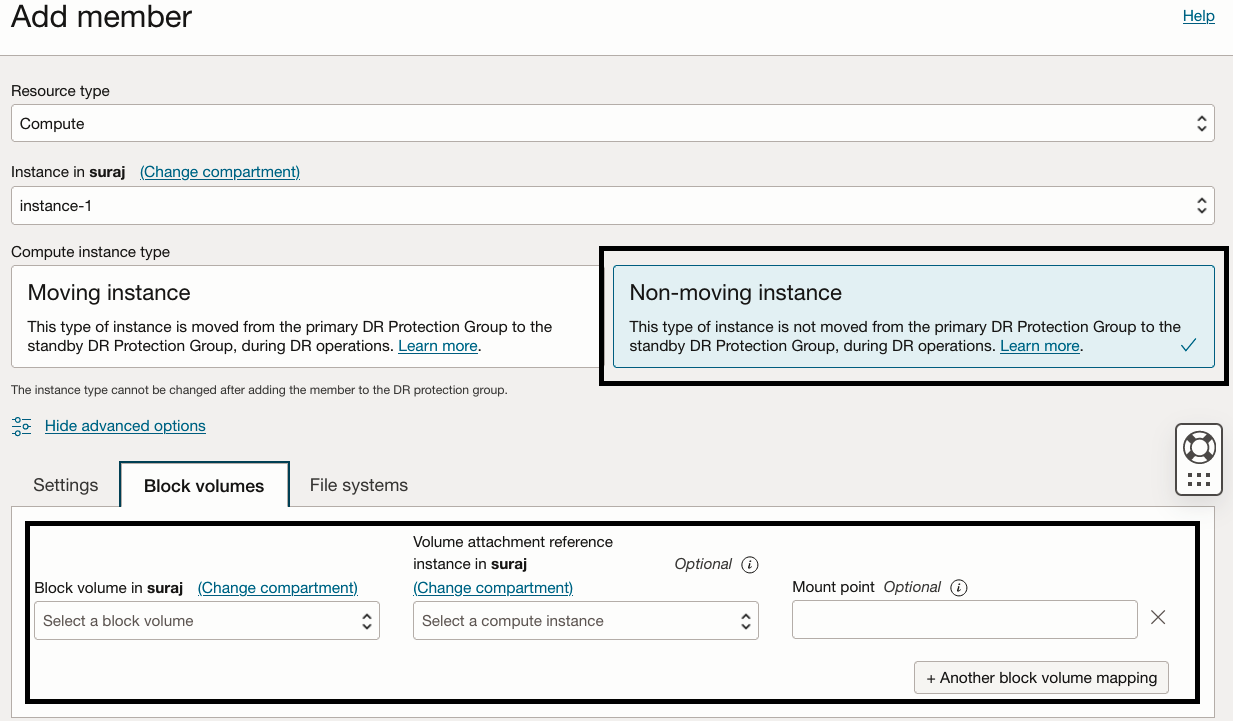
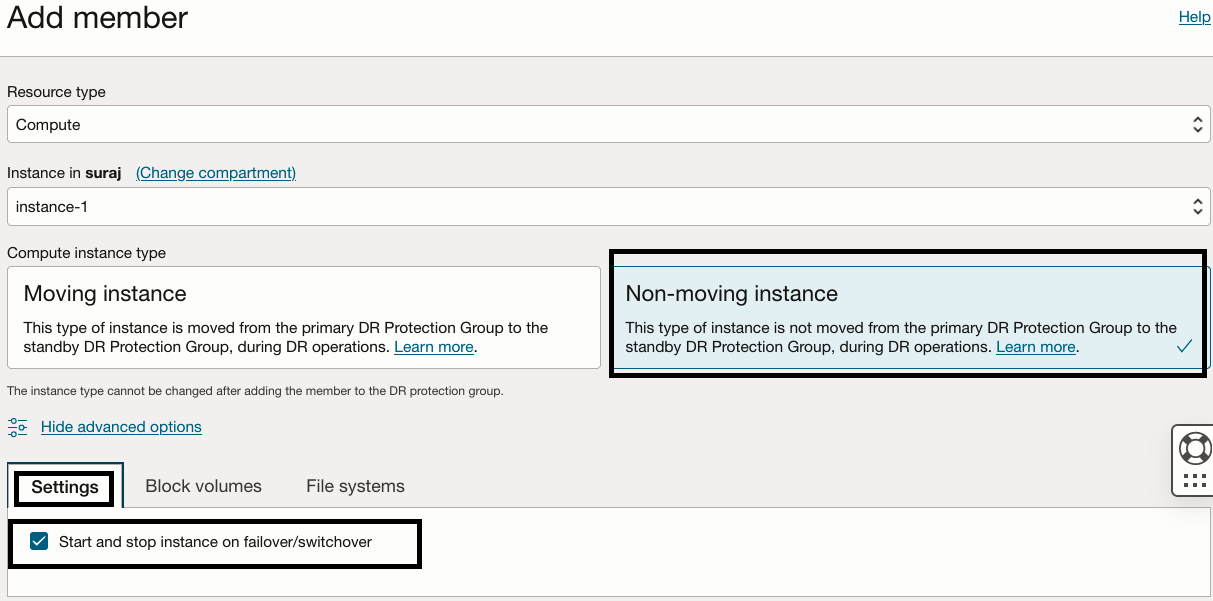
Depending on the DR topology, add the members to the DR protection groups (Primary and Standby) and create DR Drill plans from the Standby DR protection group. Full Stack DR provides built-in plan groups and steps for detach/attach block volumes,compute restart based on the type of DR plans (switchover, failover, and DR drill) and options selected while adding a non-moving compute instance. Below, built-in plan groups and steps will be generated by the Full Stack DR service, which is relevant for non-moving compute instances.
- Detach/unmount block volumes of the non-moving compute instances.
- Stop non-moving compute instances
- Start non-moving compute instances
- Attach/mount block volumes to the destination/target compute instances.
With these new features, Full Stack DR has extended its capabilities with additional DR plans and new member types.
Additional resources
Here are some additional resources to help you get started with Full Stack Disaster Recovery:
- Full Stack Disaster Recovery product page
- Full Stack Disaster Recovery User Guide
- Full Stack Disaster Recovery API Reference Guide
- Try out Full Stack Disaster Recovery using our hands-on lab
- OCI Load Balancer documentation
- OCI File Storage documentation
Feel free to connect with me directly on Twitter and LinkedIn
